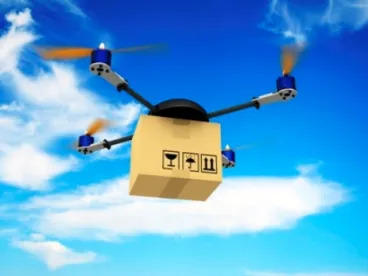Walmart announced this week that it is testing a pilot program in North Carolina for the delivery of groceries and household items using automated drones, joining other retailers looking to beef up their drone delivery business. In a related development, last week the Federal Aviation Administration (FAA) designated Amazon Prime Air as an “air carrier,” a key step in the process of Amazon’s quest to expand into the delivery-by-drone arena. Amazon joins Wing, the Alphabet Inc. subsidiary, and UPS as companies that have obtained FAA approval to operate unmanned aircraft systems (i.e., drones) under the federal regulations. Given the rapid rise of commercial drone use, businesses have understandably grown concerned that their drone technologies will expose them to a new set of risks, including damage to the drone itself, as well as third-party claims following property or physical injury caused by a company-operated or company-owned drone (and other third-party claims like invasion of privacy). In light of these risks, it is key that businesses using drones obtain the insurance coverage necessary to protect themselves against such risks, and that they explore all coverage options should a drone-related loss arise in order to maximize their chances of insurance recovery.
The advent of drone use has brought about a new industry-specific type of insurance: “drone insurance.” While there is no “standard” form for “drone insurance,” such insurance can provide first-party coverage for damage to the (often very costly) drone aircraft and its related equipment. In addition, “drone insurance” policies can provide coverage for third-party claims of property damage or physical injury caused by the drone.
Importantly, coverage for drone-related losses can also be found in other types of “traditional” policies. For example, under standard CGL policies, liability for “bodily injury” or “property damage” is covered if the “bodily injury” or “property damage” is due to an “occurrence.” Most CGL policies define an “occurrence” as an “accident.” Drones, of course, can cause accidents. CGL policies, however, often contain an exclusion for damage “arising out of” use of an “aircraft” (and courts have ruled that, while drones are unmanned and operated remotely, they are still “aircrafts”). The FAA designation as an “air carrier” may further complicate coverage by potentially implicating additional coverages and exclusions. Despite this, CGL endorsements are available that can add drone coverage.
Similarly, D&O policies can provide coverage for third-party claims because such policies generally protect against directors’ and officers’ (and, at times, the company’s) alleged “wrongful acts,” which might cover actions resulting from practices that lead to property or physical injury, or to the invasion of people’s privacy. In addition, companies can also look to their E&O policies, which can provide coverage for claims related to the improper rendering of “professional services,” which might include drone operations. Likewise, EPL policies might provide coverage for employee-related claims stemming out of an employer’s use of drones to monitor employees’ activities and job performance.
Drones are evolving past their military origin to become ubiquitous commercial tools. The FAA reports that over 1.6 million drones were registered in the U.S. as of July 2020. According to Goldman Sachs Research, drones are expected to quickly become more than a $100 billion industry. Drones are already monitoring war zones, patrolling country borders, generating climate data, charting previously inaccessible topographies, analyzing crop and cattle health, and scanning for defects in miles-long pipelines. Perhaps ironically, insurers are also using drones to adjust insurance claims. With companies like Amazon, Walmart, and UPS vying for a market edge in the ever-growing parcel delivery space, drone deliveries might also soon become normal. It is, therefore, key for policyholders to understand how to manage the unique risks associated with their drones and to have a plan to maximize their coverage options in the event of a drone-related loss.




 />i
/>i
